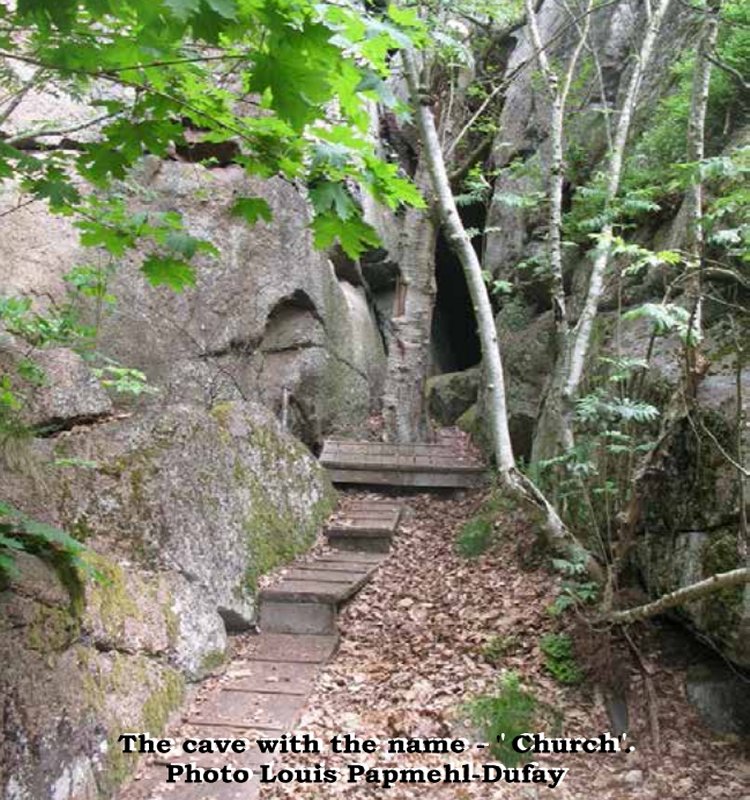Sweden’s Blue Maiden ‘Blåkulla’ Island – Mythical Place With Dark Secrets Of Witches And Wizardry
A. Sutherland - AncientPages.com - The island of Blue Maiden or Blåkulla, a Swedish island situated in the Kalmar Strait, is a mythical place that has fascinated and discouraged for centuries.
The blue island's immense plain is located 86 meters above sea level and 130 meters
above the seafloor. As early as the 15th century, the island was associated with magical notions of
witches, witchcraft, and witches' sabbaths. In Swedish folklore, the term distant 'blue mountain' also traditionally meant the place of trolls' origin.
Bizarre stories of witches that arrived annually to meet their master, the devil himself, go far back in time. It is said that a large house is at the plane's center, and "a church is there with a demon the size of a twelve-year-old child on the altar.
It was a mysterious place for certain ceremonies taking place there…" 1
How long have people been aware of the island's existence it is hard to say but the name 'Blåkulla 'first appeared in 1410 in a story about a ship on its way from Lübeck to Stockholm that found itself in a critical position in the Kalmar Strait between Öland and mainland Sweden.
The Cave Virgin chamber inside. Note the large bowl-shaped indentation on the vertical wall to the left, and the elevation of the ground below it. Photo Louis Papmehl-Dufay/Kalmar
Successfully, it was rescued near a place called Blåkulla, which identifies with the island of Blå Jungfrun.
From the middle of the 1500s, there were stories of female supernatural beings, to
which clothes and other objects were sacrificed and thus won her protection; the early
ethnographer Olaus Magnus wrote in his 'Historia' in 1555.
Magnus pointed out the significance of the Blå Jungfrun. He stated, "Seafarers in the
vicinity were not to call the island Blåkulla because then a tremendous storm would brew."
The sacred status of these sites is evident, not only from testimonies of tradition.
In 1741, Carl von Linné (1707 - 1778) visited Blåkulla, another name given to the island
even then. But the stay does not seem to have appealed to him since he describes his visit
as follows:
"If any place in the world looks horrible, this certainly is one of the most atrocious."
Apart from being the legendary meeting place of witches, it carries several taboo and noa names and is one of the most frequented sites of sailor´s baptism in the Baltic. Olaus Magnus testifies on offerings here in 1555. A large stone labyrinth is built on its massive undulating rocks. Photo: The island Blå Jungfrun - Credit: Adobe Stock - aalut
Carl von Linné was also the first to mention the Trelleborg labyrinth on the mysterious island.
he island has long been an important landmark used to predict the weather. It also has
many ancient caves that have fascinated people from time immemorial.
Apart from the evidence of Stone Age rituals, the island has long been linked with tales of witchcraft, supernatural powers, and curses.
It was believed that they could have been entrances to the dwellings of trolls and other mythical creatures. One of the island's caves has a massive hollow, about 2.3 feet (0.7 meters) in diameter,
hammered into a vertical wall. A fireplace lies underneath the hollow.
"We believe the hollow is man-made and that the fireplace has been used in connection to
hammering out the hollow, probably on several occasions," according to Ludvig Papmehl-Dufay,
an archaeologist from Kalmar Museum.
Blå Jungfrun caves contain diverse bone material. Photo: Kenneth Alexandersson
"In two caves, distinct ritual features were identified."
Blue Maiden seems to be a place" at all times" associated with various taboos and mythological
beliefs.
At the same time, surprisingly little is known about people's relationship to and presence
on the island in the past.Nobody knows how long the Trelleborg labyrinth has laid there on the rock, or who put it there and why?
Trolleborg labyrinth - Blue Virgin - Blåkulla island. Photo: Sigge Sundström
What is known is that setting up labyrinths in the archipelago was relatively common in the past. Often, people walked in them as a ritual - for fertility, good fishing luck, or a calm sea on the way home.
During four days in late May 2014, the island was surveyed only at selected locations,
where researchers dug test pits.
The uninhabited Blue Maiden or Blåkulla island has many secrets from the past, and
there's still much to investigate in granite's cracks, caves, and niches created by
million-year-old boulders on the island - the 'meeting-place of witches'.
Written by – A. Sutherland - AncientPages.com Senior Staff Writer
Updated on Oct 23, 2023
Copyright © AncientPages.com All rights reserved. This material may not be published, broadcast, rewritten or redistributed in whole or part without the express written permission of AncientPages.com
Expand for referencesReferences:
Kalmar Läns Museum, 'Fornlämningar på Blå Jungfrun'
Lecouteux, C., Encyclopedia of Norse and Germanic Folklore, Mythology, and Magic
More From Ancient Pages
-
 Battle Of Abrittus: Roman Emperor Decius And His Troops Ambushed And Defeated By Invading Goths
Featured Stories | Jul 1, 2019
Battle Of Abrittus: Roman Emperor Decius And His Troops Ambushed And Defeated By Invading Goths
Featured Stories | Jul 1, 2019 -
 Why Did Ancient Humans Have Same Sense Of Smell, But Different Sensitivities?
Archaeology | Jan 6, 2023
Why Did Ancient Humans Have Same Sense Of Smell, But Different Sensitivities?
Archaeology | Jan 6, 2023 -
 Operation Nightingale – Veterans Uncover Impressive 2,000-Year-Old Celtic Treasure
Archaeology | Feb 21, 2025
Operation Nightingale – Veterans Uncover Impressive 2,000-Year-Old Celtic Treasure
Archaeology | Feb 21, 2025 -
 Children Of Lir And Aoife’s Curse – Celtic Legend That Inspired The Swan Lake Ballet
Myths & Legends | Feb 8, 2024
Children Of Lir And Aoife’s Curse – Celtic Legend That Inspired The Swan Lake Ballet
Myths & Legends | Feb 8, 2024 -
 On This Day In History: Ruler Of Palenque Yohl Ik’nal Was Crowned – On Dec 23, 583
News | Dec 23, 2016
On This Day In History: Ruler Of Palenque Yohl Ik’nal Was Crowned – On Dec 23, 583
News | Dec 23, 2016 -
 Unsolved Ancient Mystery Of Hand Of Prêles – Unique Discovery Of Ancient Bronze Hand Puzzles Scientists
Archaeology | Sep 28, 2018
Unsolved Ancient Mystery Of Hand Of Prêles – Unique Discovery Of Ancient Bronze Hand Puzzles Scientists
Archaeology | Sep 28, 2018 -
 Legendary Mount Penglai Where The Eight Immortals Reside
Chinese Mythology | Feb 20, 2018
Legendary Mount Penglai Where The Eight Immortals Reside
Chinese Mythology | Feb 20, 2018 -
 On This Day In History: ‘Edict Of Nantes’ About Freedom Of Religion Issued By Henry IV – On Apr 13, 1598
News | Apr 13, 2017
On This Day In History: ‘Edict Of Nantes’ About Freedom Of Religion Issued By Henry IV – On Apr 13, 1598
News | Apr 13, 2017 -
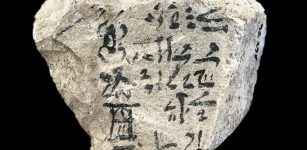 Earliest Version Of Our Alphabet Possibly Discovered
Archaeology | May 17, 2018
Earliest Version Of Our Alphabet Possibly Discovered
Archaeology | May 17, 2018 -
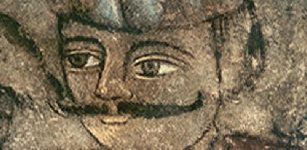 On This Day In History: Vlad II Known As Vlad Dracul (‘Vlad The Dragon’) Was Born – On August 30, 1400
News | Aug 30, 2016
On This Day In History: Vlad II Known As Vlad Dracul (‘Vlad The Dragon’) Was Born – On August 30, 1400
News | Aug 30, 2016 -
 Ancient Manuscript Reveals: Jesus Was Married And Fathered Two Children With Mary Magdalene
Archaeology | Nov 10, 2014
Ancient Manuscript Reveals: Jesus Was Married And Fathered Two Children With Mary Magdalene
Archaeology | Nov 10, 2014 -
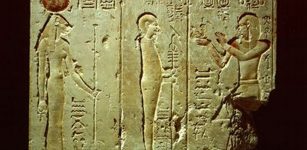 Egyptian Temple Culture In Ptolemaic-Era Survived Changes And Became Even Stronger – Researcher Says
Archaeology | Mar 1, 2017
Egyptian Temple Culture In Ptolemaic-Era Survived Changes And Became Even Stronger – Researcher Says
Archaeology | Mar 1, 2017 -
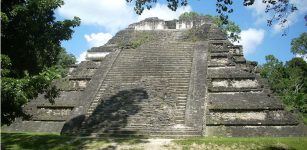 History Set In Stone – Maya Rulers Put Their Personal Stamp On Ancient Monuments
Archaeology | Sep 22, 2021
History Set In Stone – Maya Rulers Put Their Personal Stamp On Ancient Monuments
Archaeology | Sep 22, 2021 -
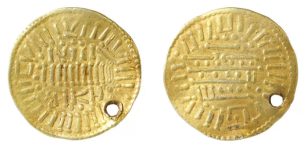 Vikings May Have Made Imitation Gold Dinar Found In Morston, Norfolk – Expert Says
Archaeology | Apr 5, 2023
Vikings May Have Made Imitation Gold Dinar Found In Morston, Norfolk – Expert Says
Archaeology | Apr 5, 2023 -
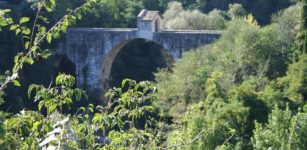 Ponte di Cecco – Legend Of A Bridge Built By An Astrologer With The Help Of The Devil
Featured Stories | Aug 19, 2021
Ponte di Cecco – Legend Of A Bridge Built By An Astrologer With The Help Of The Devil
Featured Stories | Aug 19, 2021 -
 On This Day In History: Isaac Asimov Creator Of Science Fiction Was Born – On Jan 2, 1920
News | Jan 2, 2017
On This Day In History: Isaac Asimov Creator Of Science Fiction Was Born – On Jan 2, 1920
News | Jan 2, 2017 -
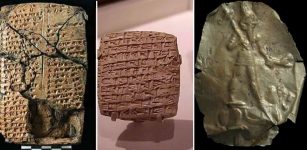 Kültepe: Once Part Of The Kingdom Of Hittites And The Center of a complex network of Assyrian trade colonies in the 2nd millennium B.C.
Civilizations | Oct 16, 2015
Kültepe: Once Part Of The Kingdom Of Hittites And The Center of a complex network of Assyrian trade colonies in the 2nd millennium B.C.
Civilizations | Oct 16, 2015 -
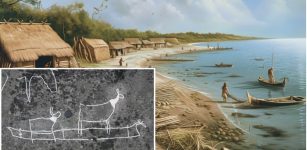 Pitted Ware Culture – Neolithic Scandinavians Used Skin Boats To Trade And Travel Across Large Distances
Archaeology | Sep 11, 2024
Pitted Ware Culture – Neolithic Scandinavians Used Skin Boats To Trade And Travel Across Large Distances
Archaeology | Sep 11, 2024 -
 Young Boy Finds Unique Micro-Mosaic Cross Medallion In Jerusalem
Archaeology | Jan 3, 2025
Young Boy Finds Unique Micro-Mosaic Cross Medallion In Jerusalem
Archaeology | Jan 3, 2025 -
 Siege Of Masada – The Last Stand Against The Roman Empire
Civilizations | Mar 27, 2017
Siege Of Masada – The Last Stand Against The Roman Empire
Civilizations | Mar 27, 2017

